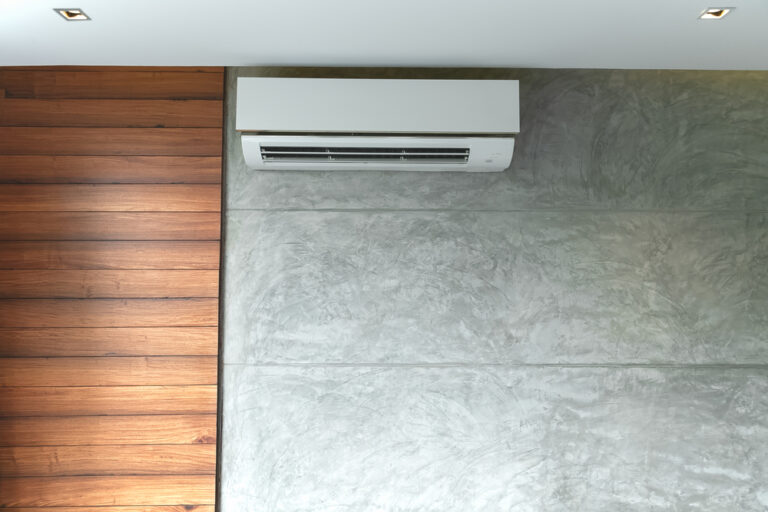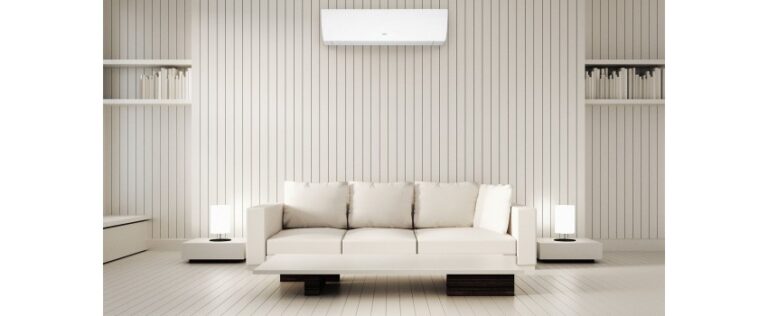Winters in Dunedin are no joke. With temperatures averaging from 4 -13 degrees between June and August, keeping your home warm is important.
Dunedin hosts a plethora of older homes, and many of them lack proper insulation and heating. If you’re a student, landlord, or general Dunedin resident, you might even live in or own one of these houses. This can make those cold winters even more of a bother.
At some point, a heating system is going to be on your radar, and heat pumps are often high on people’s lists of temperature solutions. A quality heat pump system in your Dunedin home can make all the difference, as long as you have the right kind.
What is In-Ceiling Heating?
Heat pumps can come in many shapes and sizes, from Hi-Wall heat pumps to floor consoles. One of the more discreet yet effective forms of in-home heating is the in-ceiling cassette heat pump.
A ceiling cassette heat pump is a type of air-source heat pump that is often used for heating and cooling commercial and industrial buildings, however, it is just as effective in a home environment. It is a type of air-source heat pump that is mounted in the ceiling of a room. The main advantage that this type of heat pump offers is that it is out of the way and does not take up valuable floor space.
Ceiling cassette heat pumps are very quiet, making them ideal for use in bedrooms and other rooms where noise is a concern. You don’t have to worry about yourself or others being kept up by a noisy heating system, and won’t have to sacrifice warmth for peace and quiet.
Ceiling cassette heat pumps are available in a variety of sizes and capacities. The size of the unit will be determined by the size of the room in which it will be installed, and the capacity of the unit will be determined by the amount of heat that needs to be transferred.
These units are also relatively easy to install. The unit will need to be mounted in the ceiling, and the necessary ductwork will need to be installed. Once the unit is in place, the ductwork will need to be connected to the existing heating and cooling system. Once that’s done, your heat pump is ready to go.
How Does it Work?
A ceiling cassette heat pump is a type of air-source heat pump that is typically used for heating and cooling commercial and industrial buildings. The ceiling cassette heat pump has an outdoor unit and an indoor unit. The outdoor unit contains the compressor, condenser, and evaporator. The indoor unit contains the air handler and the evaporator coils.
The ceiling cassette heat pump is different from a standard air conditioner because it uses a cassette to hold the refrigerant. The cassette is placed in the ceiling and the heat pump is mounted on the wall.
The heat pump uses its compressor to circulate the refrigerant through the cassette. The refrigerant absorbs heat from the air and transfers it to the cassette. The heat is then transferred to the room through the cassette’s fins.
Ceiling cassette heat pumps work by extracting heat from the air in the room and transferring it to the room’s heating system. In the summer, the process is reversed and the heat pump cools the room by transferring heat from the room to the outdoors.
Ceiling cassette heat pumps are very efficient and can provide both heating and cooling. The heat pump uses a small amount of energy to move a large amount of heat, making it a very cost-effective way to heat and cool a building or home.
How is it Installed?
Not everyone is a qualified tradie, and installing your heat pump is not necessarily going to be something you can comfortably do. Make sure to have your heat pump professionally installed if you aren’t confident. Oftentimes, the business you purchase your heat pump from will even offer to install your heat pump for you, so don’t stress too much about doing it yourself.
Here is a guide on how the installation of your ceiling cassette heat pump will go:
- Choose the right location for your heat pump. The ceiling is a great spot for the heat pump, as it will be out of the way and will not take up valuable floor space.
- Your installer will measure the area where you will be installing the heat pump. They’ll take into account the height of the ceiling, as you will need to leave enough room for the heat pump unit.
- The installer will cut a hole in the ceiling where the heat pump will be installed. The hole should be slightly larger than the heat pump unit.
- The heat pump unit will be inserted into the hole in the ceiling.
- The heat pump unit will be secured to the ceiling with screws.
- The installer will connect the electrical wiring to the heat pump unit.
- They will then turn on the power to the heat pump unit and test it out. This will make sure that the unit is cooling or heating the room as desired.
- Now you can enjoy the comfortable temperature in your home, courtesy of your new ceiling cassette heat pump!
Benefits of an In-Ceiling Cassette Heat Pump
There are several benefits that come with using a ceiling cassette heat pump. One of the biggest benefits is that they are very efficient. They use less energy than a standard air conditioner because they do not have to cool the air before it is circulated.
Additionally, they are very quiet because the compressor is located outside of the room. You won’t have to worry about loud noises if you’re looking to install in a bedroom.
Another benefit of ceiling cassette heat pumps is that they are very versatile. They can be used in a variety of settings, such as homes, offices, and classrooms. They can also be used in both heating and cooling mode.
The ceiling cassette heat pump is also a great choice for a home with a small child or a pet as it will remain out of reach of grabby hands or roaming teeth.
Ceiling cassette heat pumps are also easy to install. They can be mounted on the wall or ceiling, and they do not require ductwork.
Disadvantages of an In-Ceiling Cassette Heat Pump
There are a few disadvantages that come with using a ceiling cassette heat pump.
One of the biggest disadvantages is that they can be more expensive than a standard air conditioner. While not more expensive by a large margin, they can still be a bigger investment than a more standard unit of heating, and thus price should be taken into consideration.
Another disadvantage of ceiling cassette heat pumps is that they can be difficult to repair. If the cassette needs to be replaced, it can be a difficult and expensive process. However, your heat pump provider can and often will provide services for their products, and should be able to steer you in the right direction if your heat pump needs some help.
Is it Right for Me?
So, what do you think? Does in-ceiling heating sound like the saviour of your Dunedin home this winter? If quiet, and efficiency is just as important to you as the heating itself, then an in-ceiling cassette unit might just be for you.



